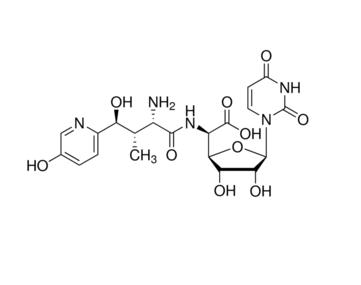Mechanism and Toxicity of Haloprogin
Mar 31,2022
Haloprogin (3-iodo-2-propynyl 2,4,5-trichlorophenyl ether; Halotex cream) has been used as a topical agent for the treatment of dermatophyte infections. Haloprogin was synthesized in 1963 by Seki as one of a series of halophenol-g-iodopropargyl ethers with antifungal activity. Haloprogin has activity against dermatophytes, Candida spp., and a limited number of Gram-positive bacteria. This compound is not commercially available in the USA or in the UK.

Mechanism of action
The precise mechanism of drug action is not known. In Candida albicans, haloprogin causes decreased oxygen uptake, decreased 14C-Lleucine incorporation, and intracellular potassium loss, possibly suggesting loss of cell membrane integrity.
Haloprogin (topically applied) has been used for the treatment of dermatophytoses (tinea corporis and tinea pedis) and for the treatment of cutaneous candidiasis. Haloprogin is more effective than placebo (vehicle) for the treatment of dermatophytoses and is effective as 1% tolnaftate for the treatment of tinea pedis and other dermatophyte infections. Haloprogin was inferior to clotrimazole 1% for the treatment of tinea cruris in military personnel. Haloprogin 1% is as effective as topically applied nystatin ointment for the treatment of cutaneous candidiasis with response rates in excess of 82%.
Bioavailability
Haloprogin is only applied topically. The range of systemic absorption in laboratory animals following topical application ranges from 19% to 100%. Studies using various formulations of 14C-haloprogin in humans demonstrate that 9–15% of the applied compound is absorbed and subsequently excreted in the urine.
Excretion
The parent drug is not found in the urine of rats receiving i.v. haloprogin. Haloprogin undergoes dealkylanation. The major metabolite is 2,4,5-trichlorphenol, which is excreted in the urine.
Toxicity
The toxicologic properties of haloprogin have been examined in laboratory animal models. Haloprogin caused mild skin irritation in pigs and rabbits. In humans haloprogin is well tolerated, but on occasions causes mild skin irritation. There was no evidence of allergic manifestations in early testing, but subsequently several cases were reported.
One of these cases occurred with haloprogin solution and the stabilizing and solubilizing agent diethyl sebacate was implicated. Haloprogin does not appear to cause photosensitivity. There is no evidence of perturbations in biochemical, hematologic or urine analyses.
- Related articles
- Related Qustion
Griseofulvin (MW 352.5 daltons) is a metabolite of Penicillium griseofulvum and P. janczewskii that disrupts the fungal mitotic spindle and inhibits cell wall synthesis. The structure is shown below. This compound was discovered in 1939, bu....
Mar 31,2022APINikkomycin Z is an experimental compound with antifungal properties. Like all nikkomycins, it consists of a pyrimidine nucleoside linked to a short peptide moiety. There are more than 14 naturally occurring nikkomycins and a number of synth....
Mar 31,2022APIHALOPROGIN
777-11-7You may like
- HALOPROGIN (200 MG) USP/EP/BP
-

- $1.10 / 1g
- 2025-11-18
- CAS:777-11-7
- Min. Order: 1g
- Purity: 99.9%
- Supply Ability: 100 Tons Min
- Haloprogin
-

- $1520.00 / 25mg
- 2025-10-27
- CAS:777-11-7
- Min. Order:
- Purity:
- Supply Ability: 10g






